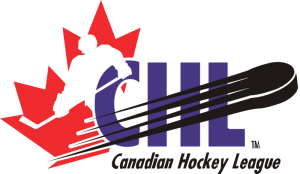What does a Junior Hockey Editorial Assistant do, exactly?
 As I’ve mentioned on my bio page, I work at the Canadian Press as a Junior Hockey Editorial Assistant. (The Junior denotes the level of play, not my position.) It’s a really fun job that lets me pursue two of my loves: writing and following sports.
As I’ve mentioned on my bio page, I work at the Canadian Press as a Junior Hockey Editorial Assistant. (The Junior denotes the level of play, not my position.) It’s a really fun job that lets me pursue two of my loves: writing and following sports.
It’s also nice because at parties people get all excited about what they assume is an exciting, glamorous job.
Inevitably, they ask me how it all works. I figured I would break it down for my readers.
Every Friday and Saturday night I go to CP’s newsroom for about 9 p.m., just as the Quebec Major Junior Hockey League’s games are wrapping up.
Covering the QMJHL is very straight forward.
All I need to do is create a “round-up” from their website’s detailed game sheets. As long as no games are postponed or go to a shoot out, I can do this in an hour to an hour and a half. Here’s one I wrote on Jan. 3: QMJHL: Martel wins 222ndgame as Sagueneens beat Remparts.
As I’m finishing my QMJHL writing results from the Ontario Hockey League will begin to trickle in.
For most OHL games, CP has freelance writers on location that we call “stringers”. Stringers email in copy that I read over, format, and then put on the wire as a 150-400 word story. We also receive copy from member papers. For example, we often get material on the Kingston Frontenacs from the Kingston Whig-Standard.
Once all the stringer and members have sent in their work, I write separates for any games that didn’t have a reporter on location. Like my QMJHL round-up, I rely on the OHL’s website for my information.
When that’s all done I cobble all the OHL stories together as a round-up. Here’s an OHL overview from Jan. 3: OHL: Bulls rally from early deficit to defeat Generals.
By this point it’s around midnight and some Western Hockey League games will be done.
The WHL is tricky because it is spread over three time zones, so I have to keep my eye on the scores page of their website constantly. Often times there will be a game in Brandon, Man., or some early games in Regina or Saskatoon that will require my attention before I’m even done the OHL.
Covering the WHL ramps-up the amount of work I have to do.
Again, I rely on stringers and members to supply me with copy for separates, and I bolt it all together to make a round-up. Here’s a lengthy one from Jan. 2: WHL: Giants win chippy game against Chiefs.
An extra wrinkle in my WHL work is that I also have to create box scores for “agate”.
What’s agate? I’m glad you asked.
Agate is defined by Wikipedia as “a unit of typographical measure. It is 5.5 typographical points, or about 1/14 of an inch. [...]. An agate font was commonly used to display statistical data or legal notices in newspapers. It is considered the smallest point size that can be printed on newsprint, and then read legibly.”
In other words, when you flip to the back of your sports section and look at all the box scores and standings, you are looking at agate. The standings of all three leagues are updated in agate, but the WHL has individual box scores done in agate as well.
The WHL is the most involved of the three leagues in the Canadian Hockey League. It’s got the most teams, the most fans, and therefore requires the most coverage. In small towns like Prince Albert, Sask. or Kennewick, Wash., the WHL is the biggest show in town.
More often than not, the small arenas that host WHL games are sold out.
When all is said and done it is between 2 and 3 a.m. and I have written or edited between 16 and 18 separate game stories and put together three round-ups. That sounds like a lot, but it’s actually not so bad – typically between 2,200 and 4,000 words. The stories and agate appear across Canada, in parts of the United States, as well as on websites like TSN.ca.